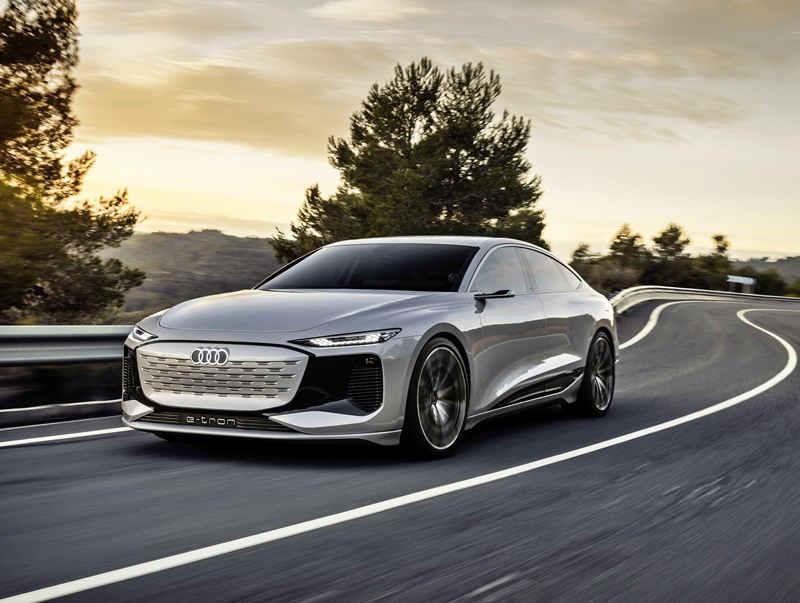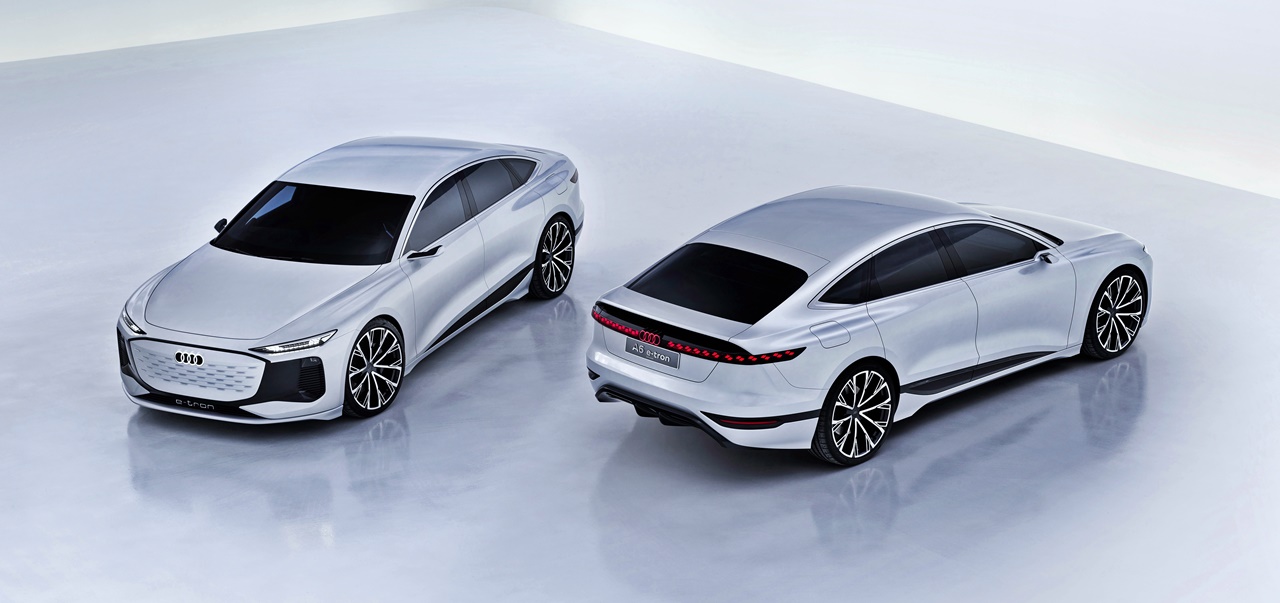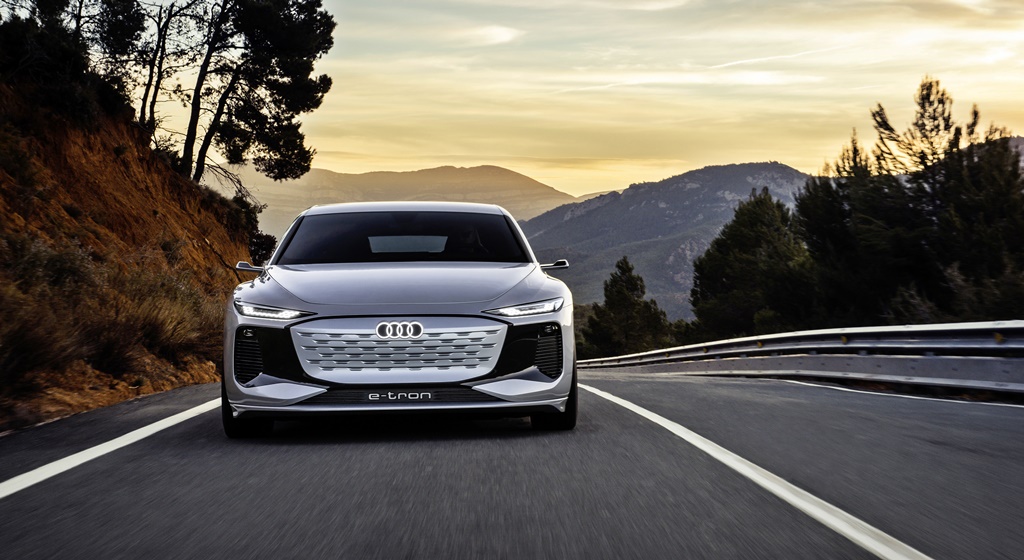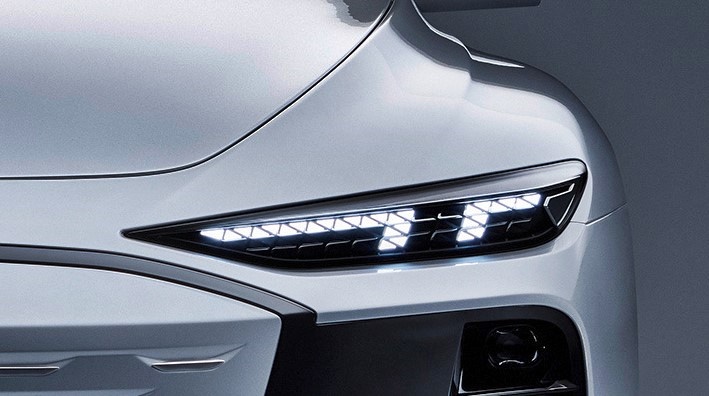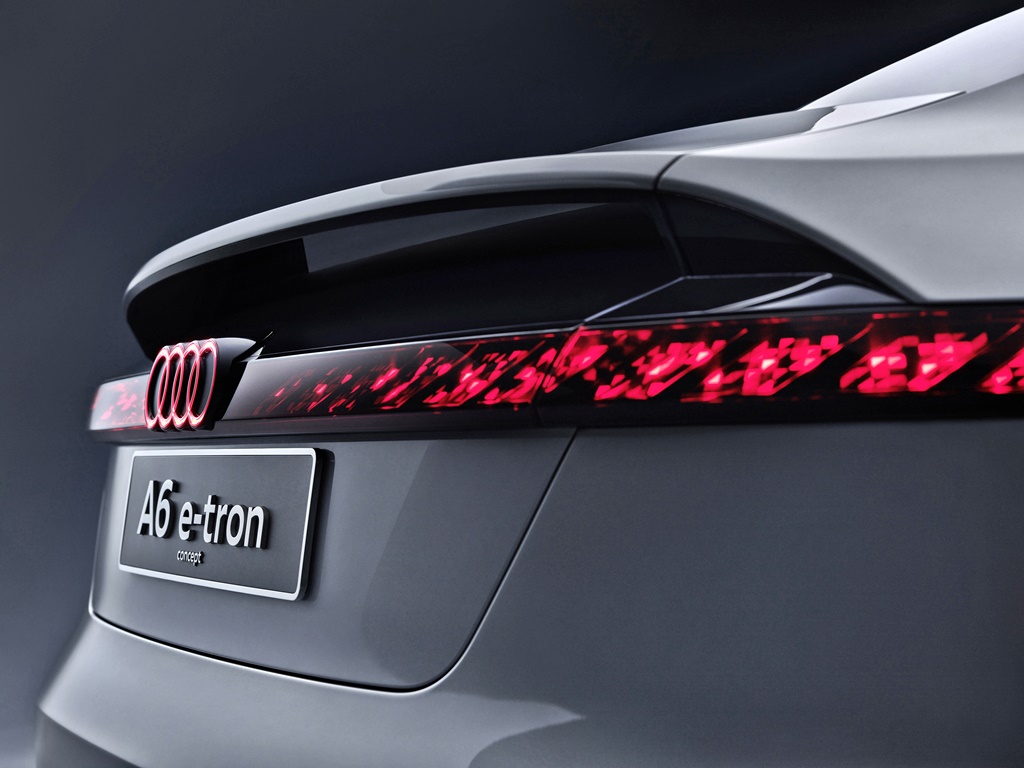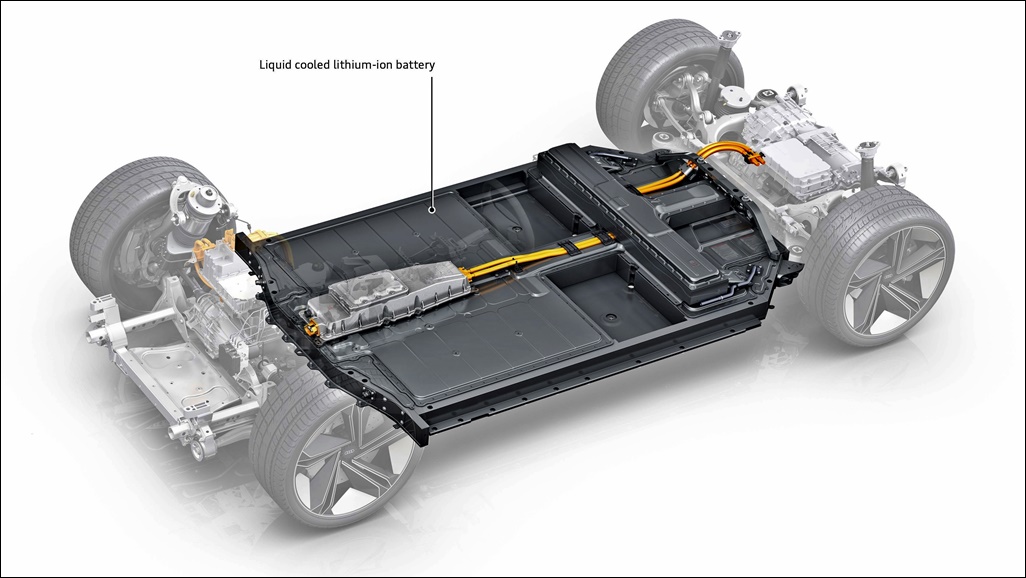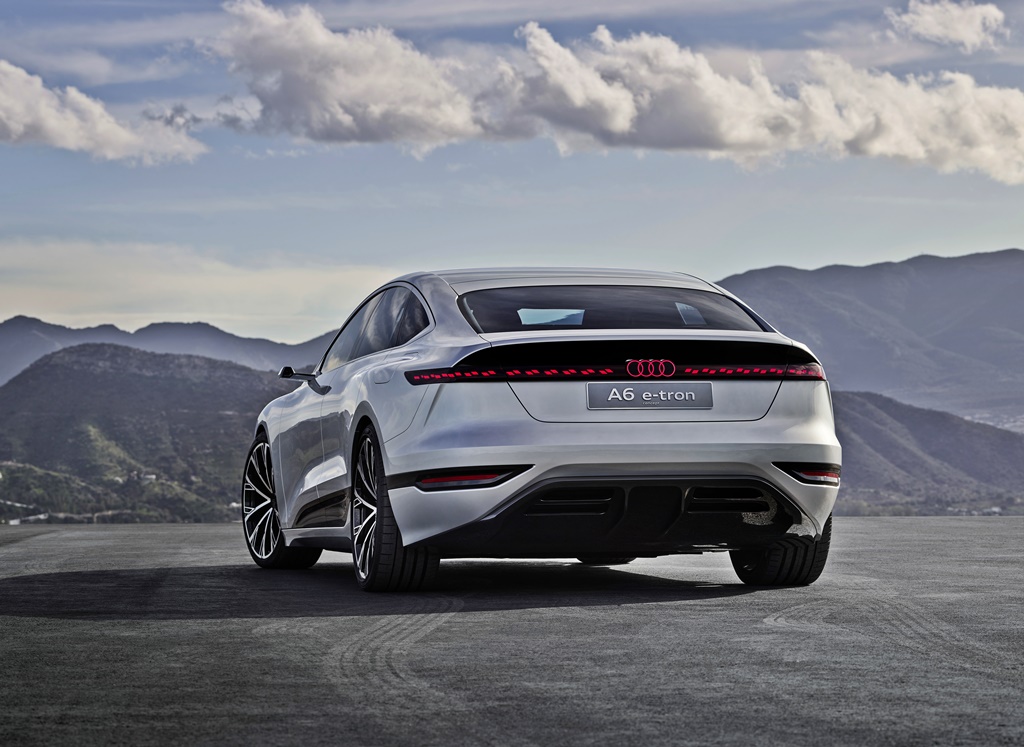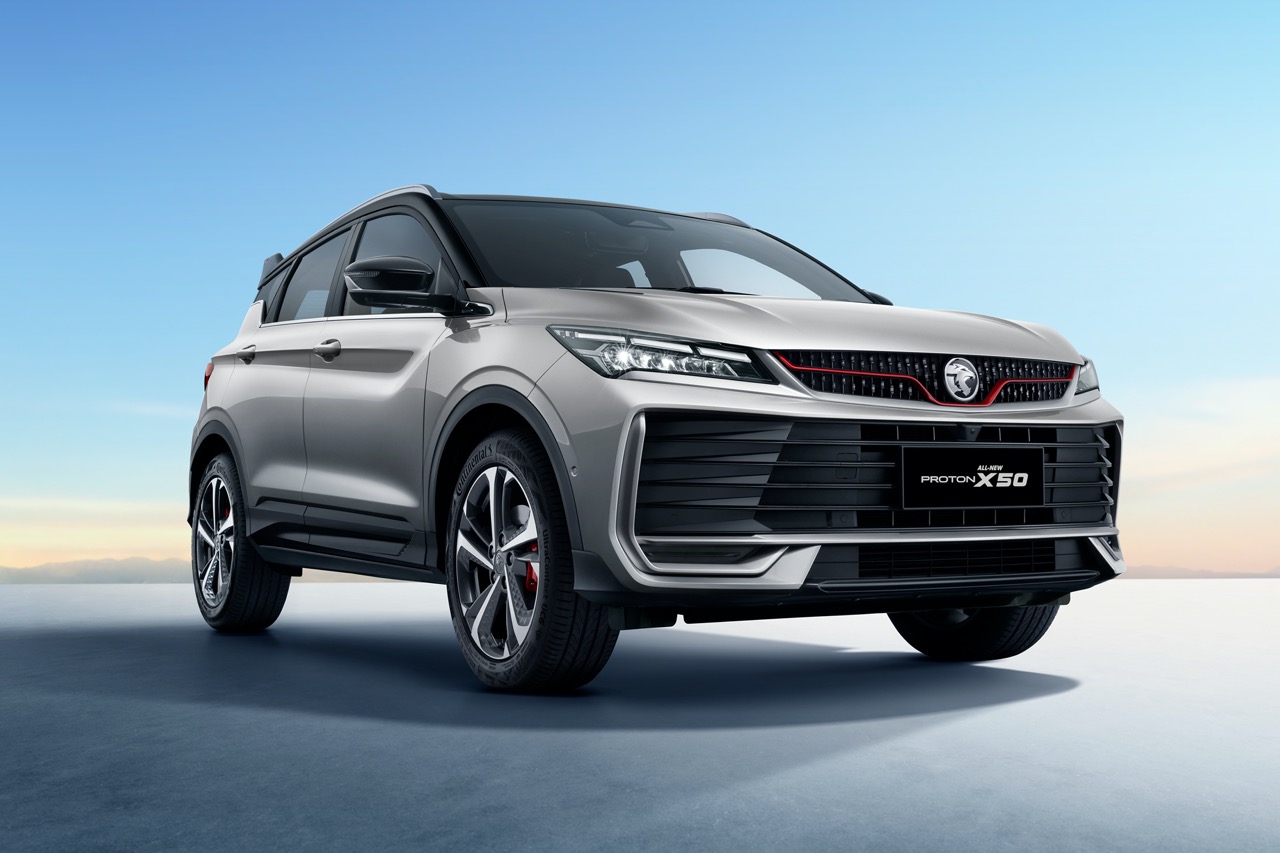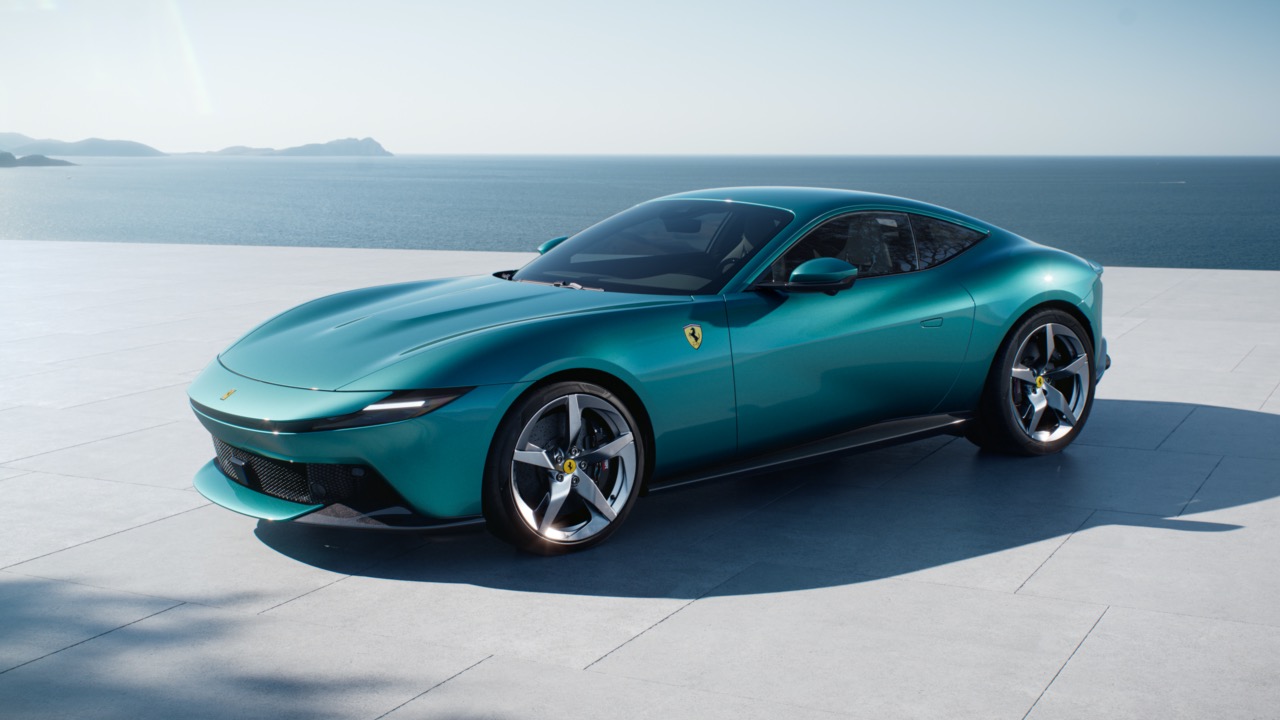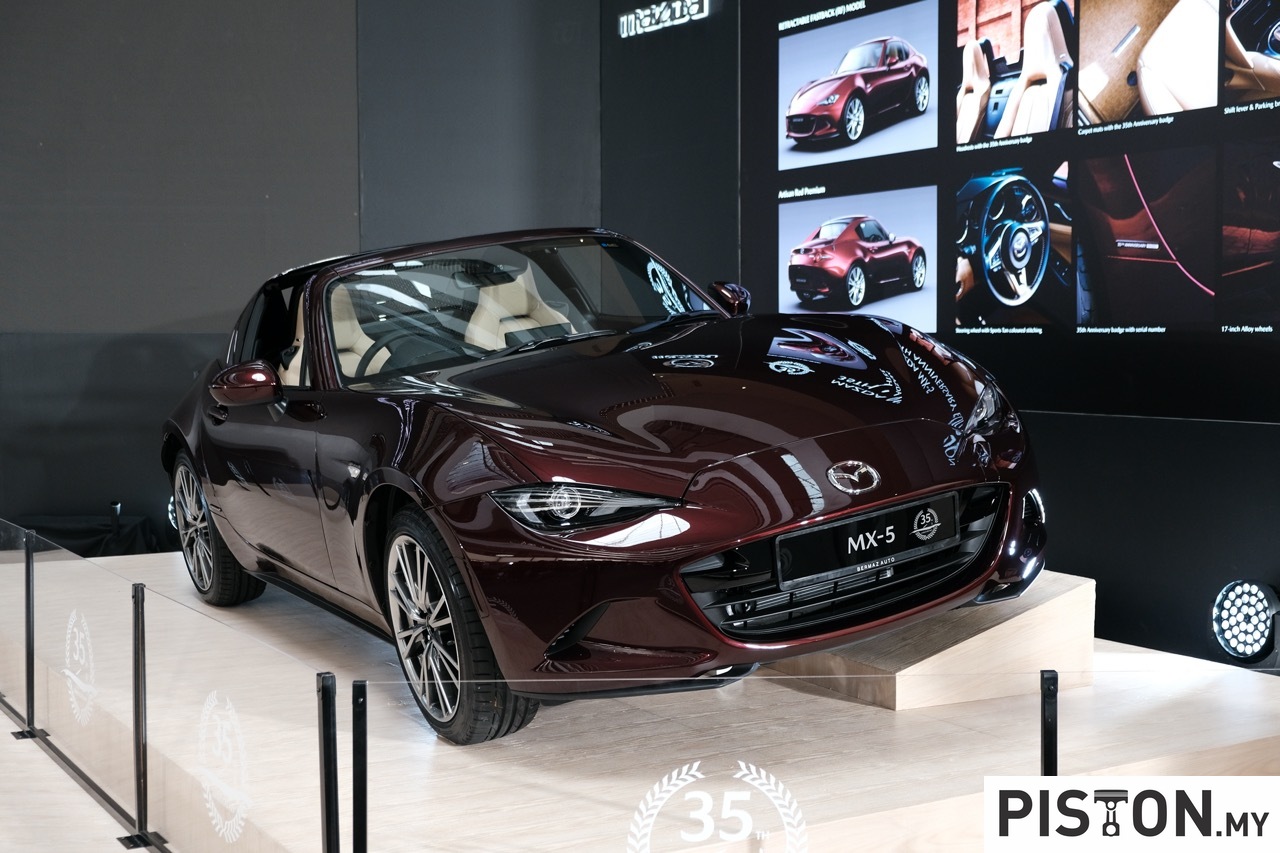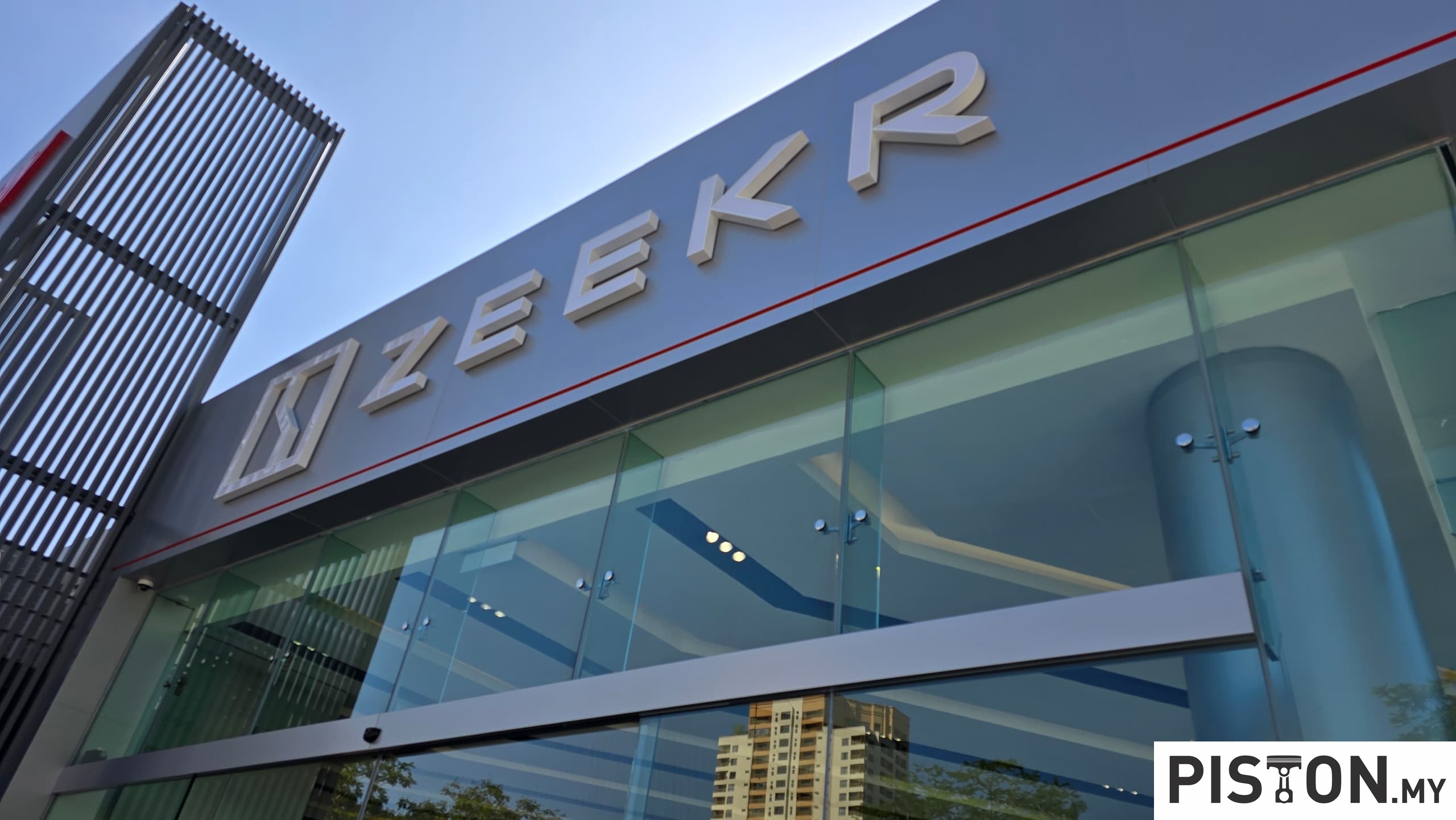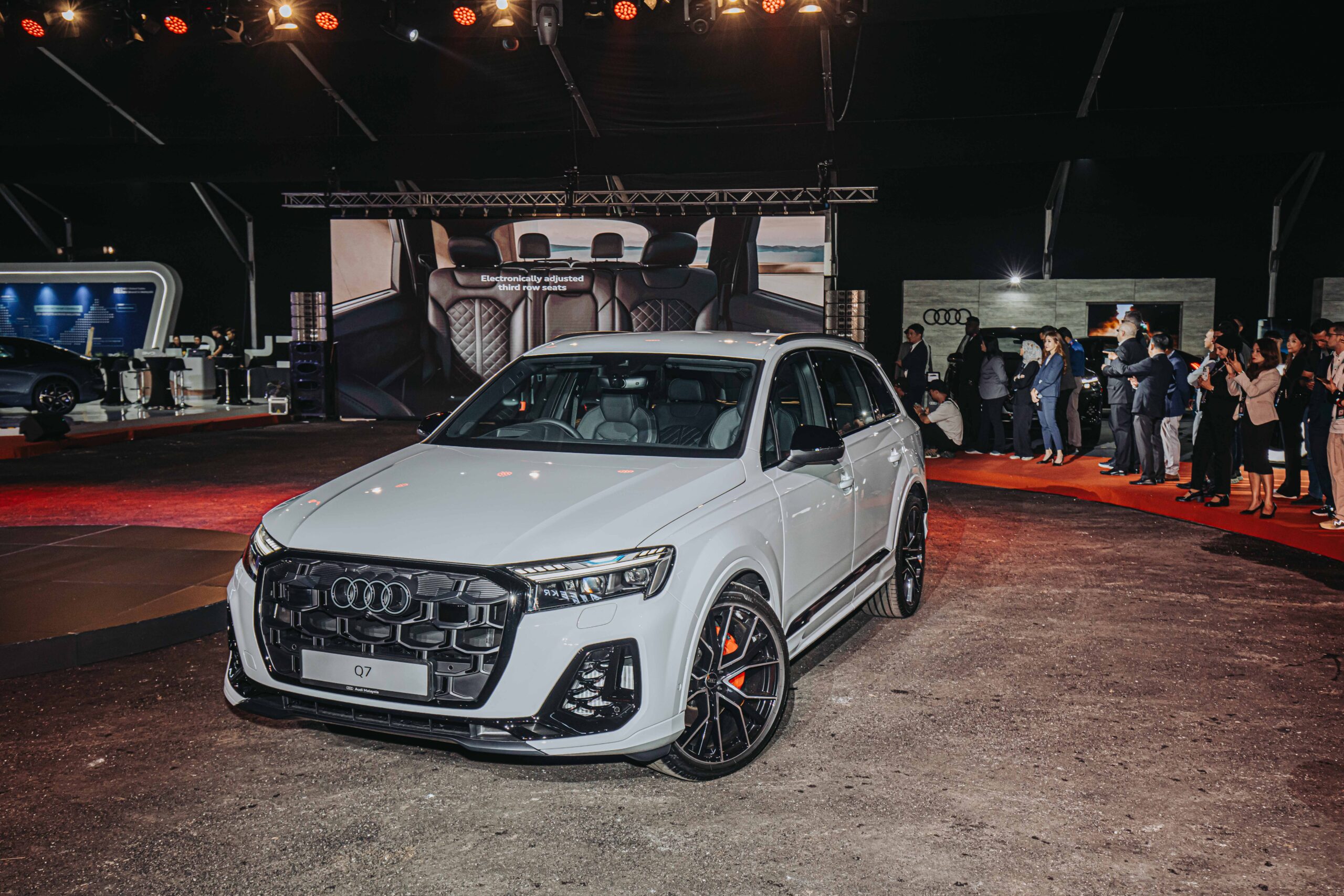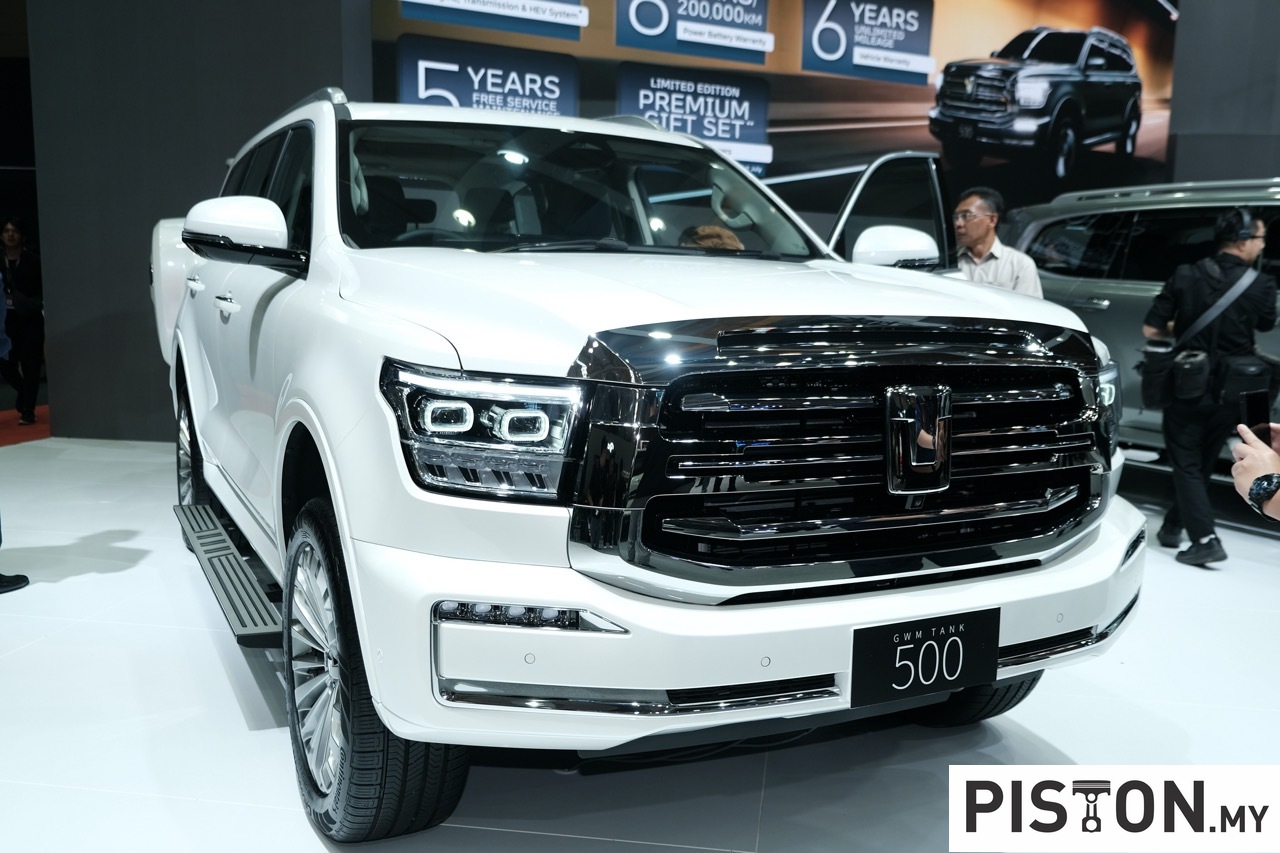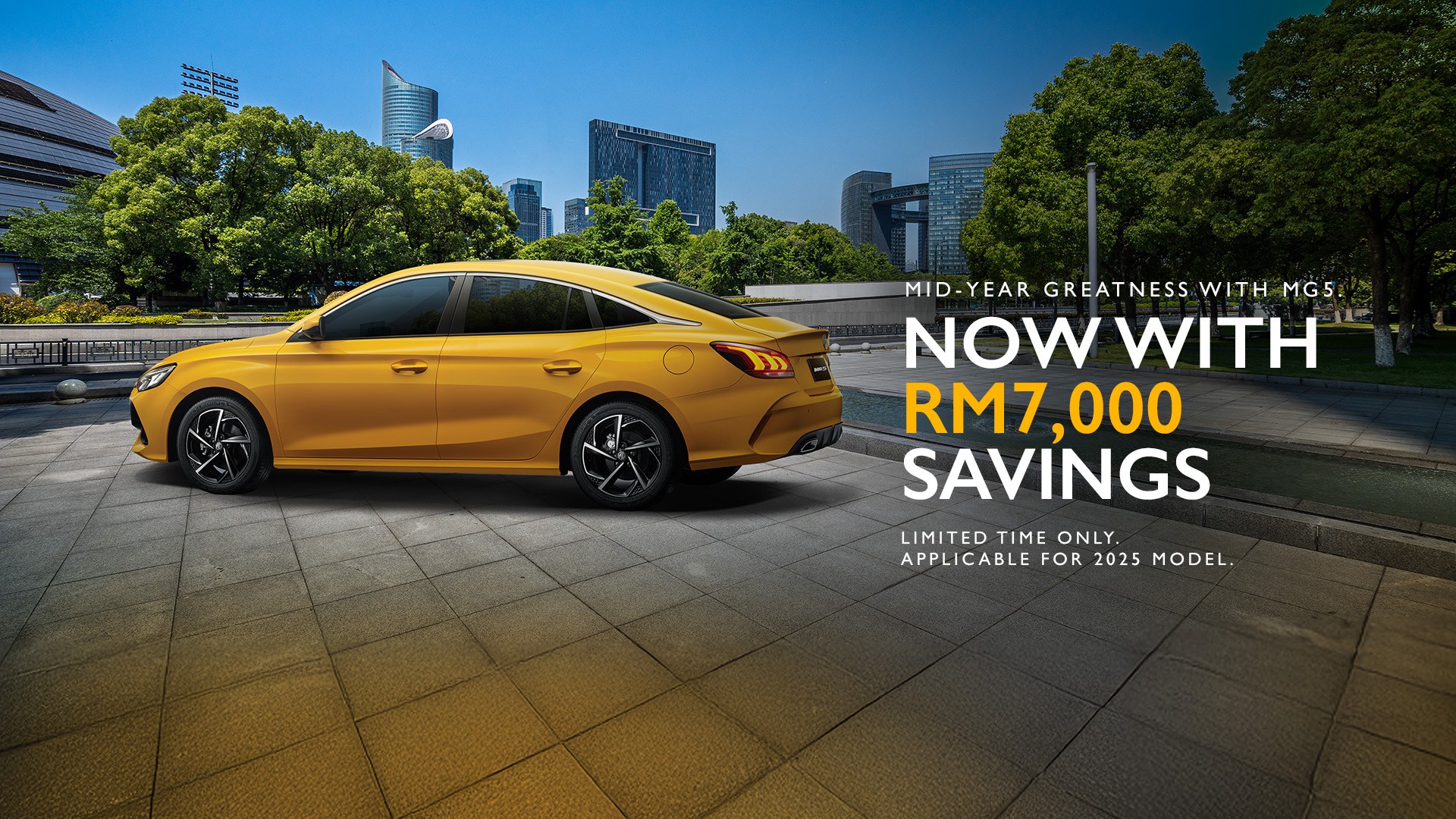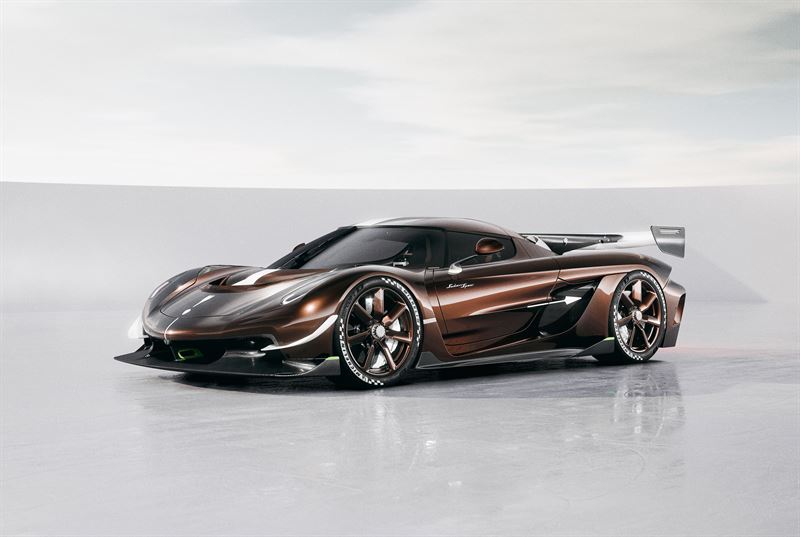
‘PPE’ to most people today would refer to ‘Personal Protective Equipment’, the necessary items like gloves, facemask, overalls, etc that healthcare workers have to wear daily while attending to patients with COVID-19 infections. But for Audi, ‘PPE’ also means Premium Platform Electric, a completely new architecture which will serve as the technology platform for its high-end models.
The PPE is an essential element of the carmaker’s ‘e-volution’ towards electric mobility which will see, in late 2022, the launch of the first production models in the C-segment and then the B-segment. As a preview to this future range of fully electric models, Audi is displaying the 4-door A6 e-tron concept at Auto Shanghai this week.
Sporting the A6 emblem, the concept car underscores its place in the brand’s luxury-class model series. This model (earlier known as the Audi 100) has represented the brand in the segment since 1968. Different bodystyles have been added over the years, including the Sportback, which was introduced as the A7.
An electrified drive system was offered with the A6 Hybrid in 2011, while the current A6 TFSIe made its debut in 2019 with a plug-in hybrid drive (PHEV) that could give a claimed electric range of up to 91 kms.
Fully electric propulsion
Unlike the latter, however, the A6 e-tron concept relies exclusively on electric power, based on the future PPE platform. At the same time, it also represents an entirely new design concept; the only thing it has in common with the current A6 are its dimensions. The 4.96-metre long, 1.96-metre wide, and 1.44-metre high body is designed as a Sportback, its lines are an obvious reflection of the systematic advancement of Audi’s current design language. This design language and the form of the A6 e-tron concept will be applied to Audi’s future production models.
For its part, the PPE technology will ensure that what the car’s lines imply translate into dynamic driving performance and everyday suitability befitting use as a primary vehicle. Specifically, this means that, depending on the selected drive system and model version, an A6 e-tron should be able to travel more than 700 kms on a fully charged battery pack, with the most powerful variants able to sprint from 0 to 100 km/h in less than 4 seconds.
Excellence in aerodynamics
Aerodynamics has always played a key role in Audi’s long history. In the early 1980s, the Audi 100 with a Cd of 0.30 was the more aerodynamically efficient production car available. The A6 e-tron concept continues that achievement with a Cd of 0.22, unprecedented in the electrified C-segment. The significantly low aerodynamic drag means lower energy consumption and therefore extended range. At the same time, fine-tuning in the wind tunnel has resulted in an organic design with elegance and harmony – instead of an ugly teardrop or bubble shape. The form appears monolithic, as if from a single mold, particularly when viewed from the side.
The wheel arches are connected by the specially sculpted battery area above the rocker panel, which is highlighted with a black inlay – a design element that is now a hallmark of the Audi brand’s fleet of EVs. Also typical of e-tron models are the sleek, camera-based virtual exterior mirrors at the base of the A-pillar.
Looking at the front, it is immediately apparent that the A6 e-tron concept is electrically-powered. A characteristic feature is the large enclosed Singleframe grille, which is bordered at the bottom by deep air intakes for cooling the drivetrain, battery, and brakes. The flat headlight bezels extend far into the sides of the laterally sweeping front end, underscoring the horizontally aligned architecture of the vehicle body.
The body colour
Heliosilver is the name of the technoid-looking body colour which accentuates the shapes of the body with a three-dimensional depth effect (particularly visible in the area around the quattro wheel arches). The Singleframe grille, also in Heliosilver, forms a striking contrast to the deep matte black of the frame.
Additionally, the paint offers tangible technical benefits that reduce energy consumption. This is because it can reflect a significant percentage of thermal radiation in sunlight, thus reducing the amount of energy that enters the car’s body and its cabin. The result is that the occupants do not need to use the air conditioning as much, a factor that has an impact on energy consumption and can enhance range.
Advanced lighting technology
The flat headlights and taillights are slim and flush with the overall composition of the lines. Digital Matrix LED and digital OLED technology makes it possible to achieve maximum brightness and a wide range of features even with a minimal surface area, while at the same time offering customizable light signatures. The small, high-resolution projectors can display warning symbols on the ground to warn a bike rider that the car door is about to open, for example.
Another four high-resolution LED projectors – inconspicuously integrated into the corners of the vehicle – generate turn signal projections. The design of these projections can be modified to address regulations in different markets and regions.
The rear end of the concept car features a new generation of digital OLED elements that, as a continuous strip of lights, act like a display. They can also be used to create almost unlimited customizable variations of digital light signatures and dynamic lighting displays that can be adapted to the customer’s personal taste.
High ground clearance, low ride height
The PPE is designed specifically for battery-electric drive systems and can therefore take full advantage of all the benefits of this technology. The key element is a battery module between the axles that holds around 100 kWh of energy in the A6 e-tron concept. The use of the entire vehicle base makes it possible to achieve a relatively flat layout for the battery. This means that for the first time, it will be possible to use this single platform for both vehicles with a high ground clearance and vehicles with a decidedly dynamic, flat architecture without any changes to the basic architecture.
Fast charging, high range
800V charging technology allows the battery pack to be charged with up to 270 kW, making recharging time very short time – provided the relevant fast-charging system is available. This technology makes charging times possible that come close to a stop to refuel a car powered by a combustion engine. Just 10 minutes would be enough to recharge the battery to a level sufficient to power the vehicle for more than 300 kms. In less than 25 minutes, the 100-kWh battery pack can be charged from 5% to 80%.
The battery size and wheelbase of PPE vehicles are scalable, making them suitable for use in different market segments. The ratio of a fairly long wheelbase and very short overhangs is something they will all have in common. The occupants will benefit from the long wheelbase which allows a longer interior and more legroom.
Quattro all-wheel drive
The absence of the traditional a transmission tunnel (because of the EV architecture) also contributes to the spaciousness but it does not mean that the quattro all-wheel drive system is omitted. It can be included as there can be one electric motor each mounted to the front and rear axles that use electronic coordination to deliver all-wheel drive on demand and achieve a perfect balance between driving dynamics and energy efficiency. The 2 electric motors are capable of delivering a total output of 350 kW/800 Nm.
In addition, the e-tron family will also include basic versions optimized for minimum consumption and maximum range – in this case, propulsion will come from a single electric motor mounted to the rear axle.








